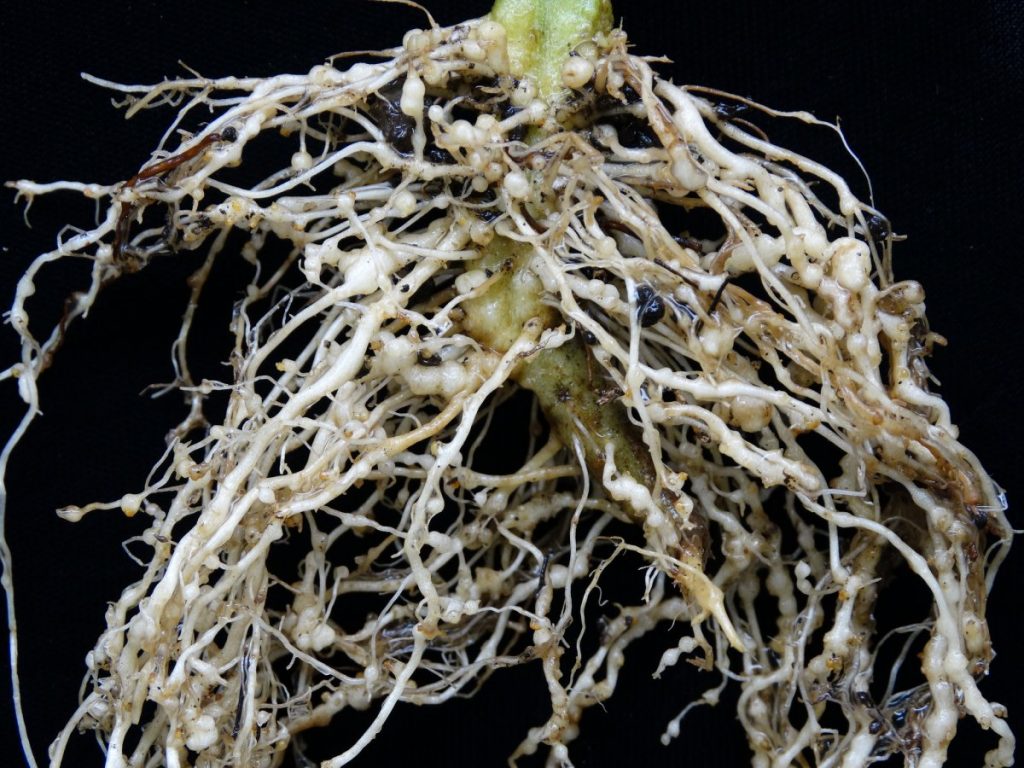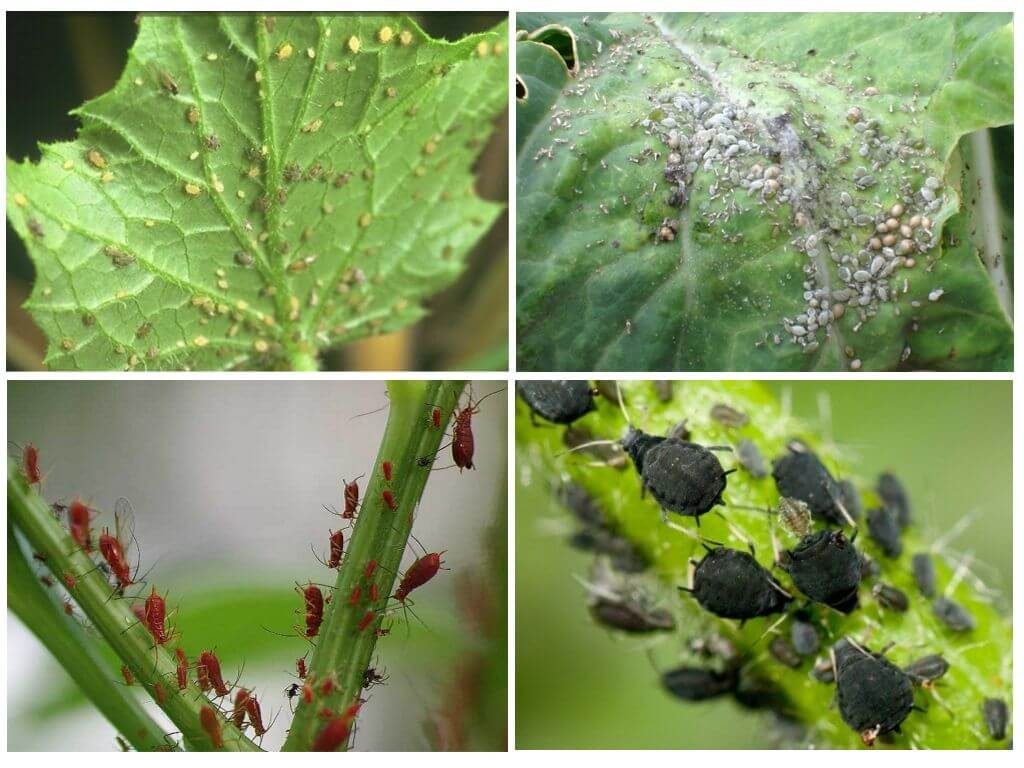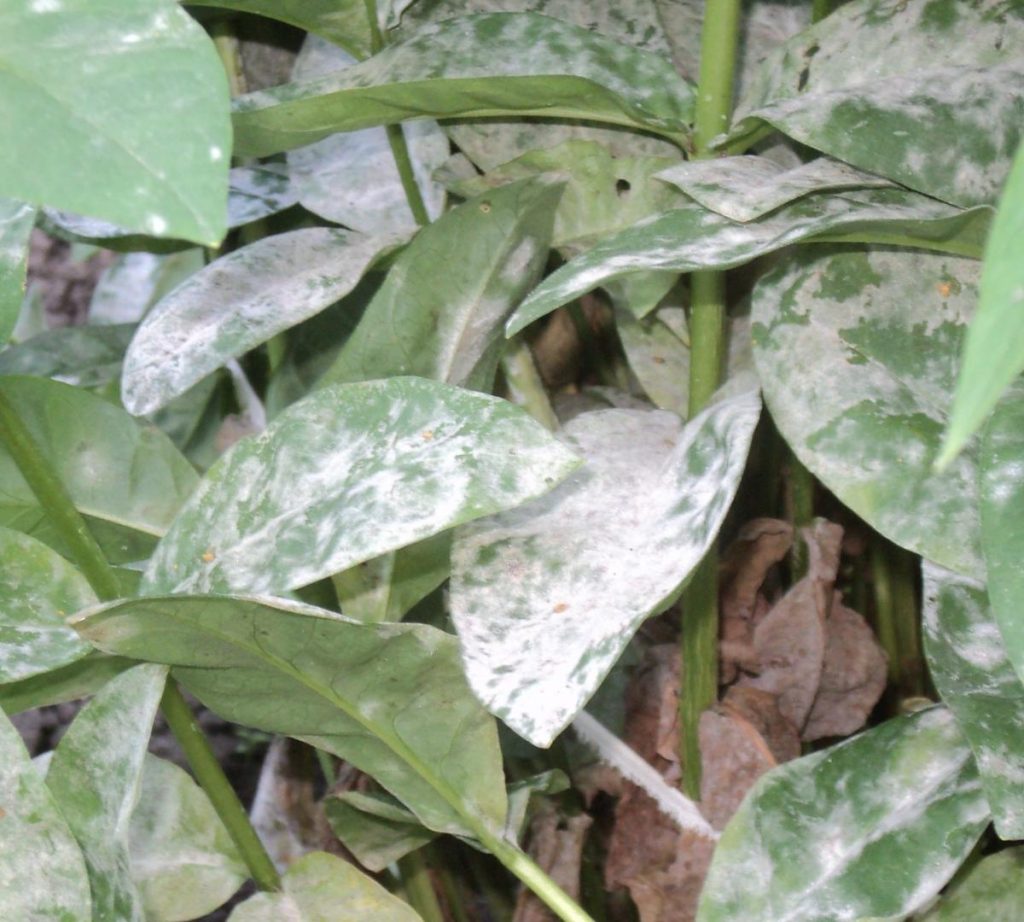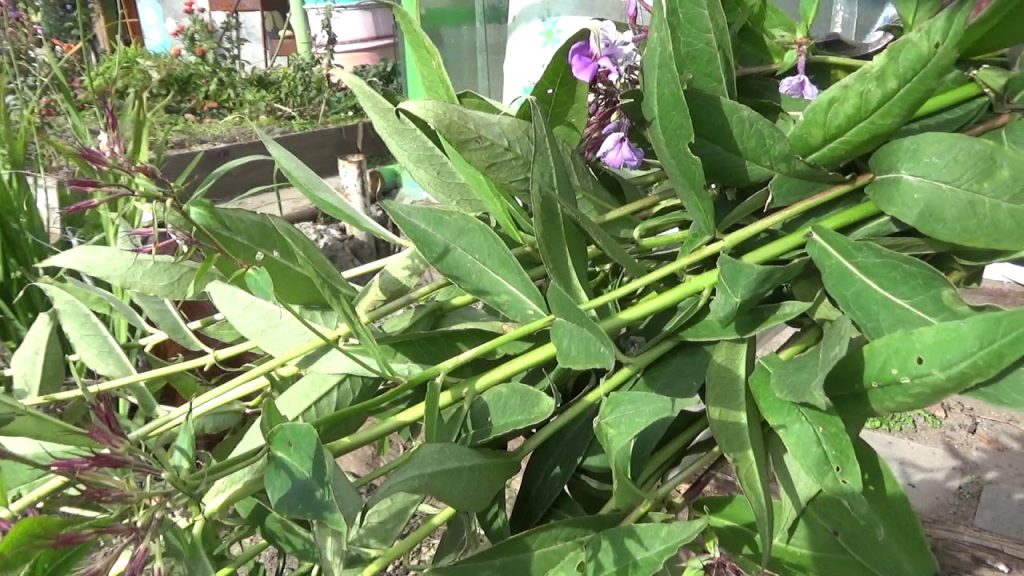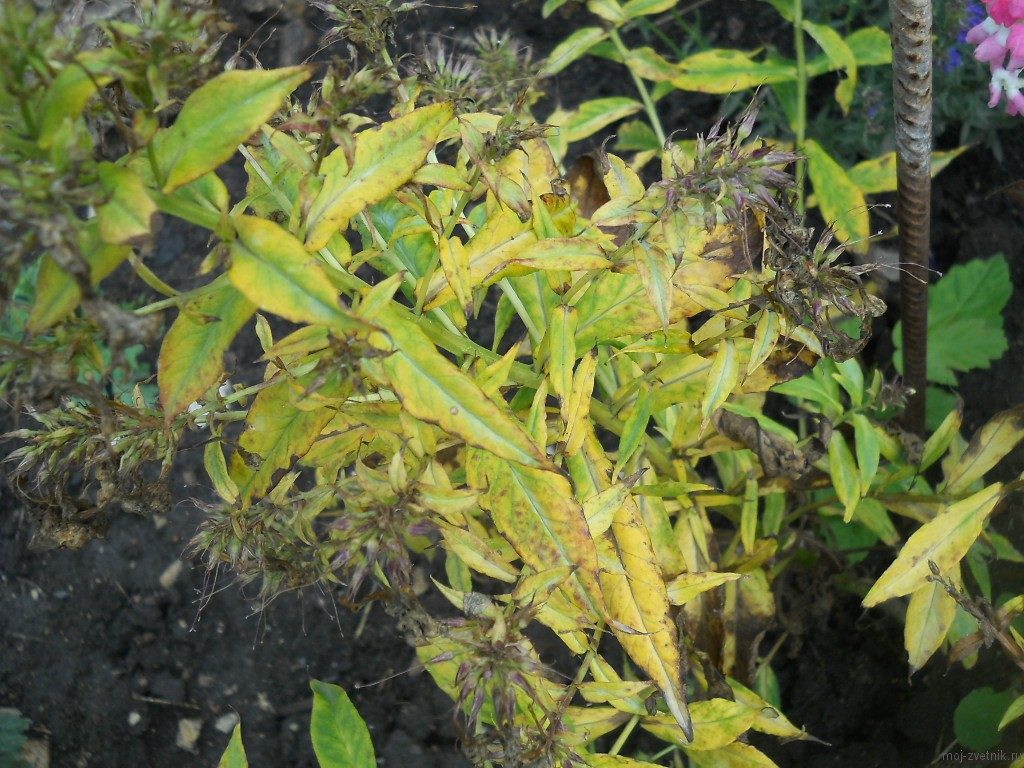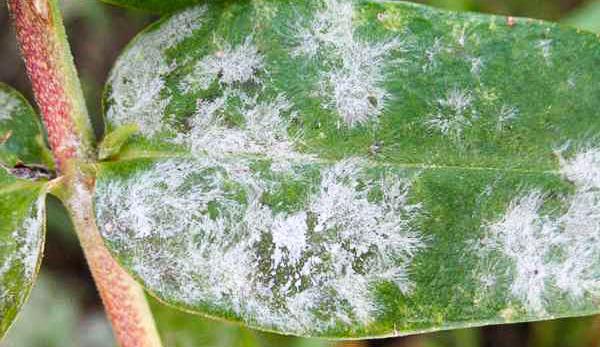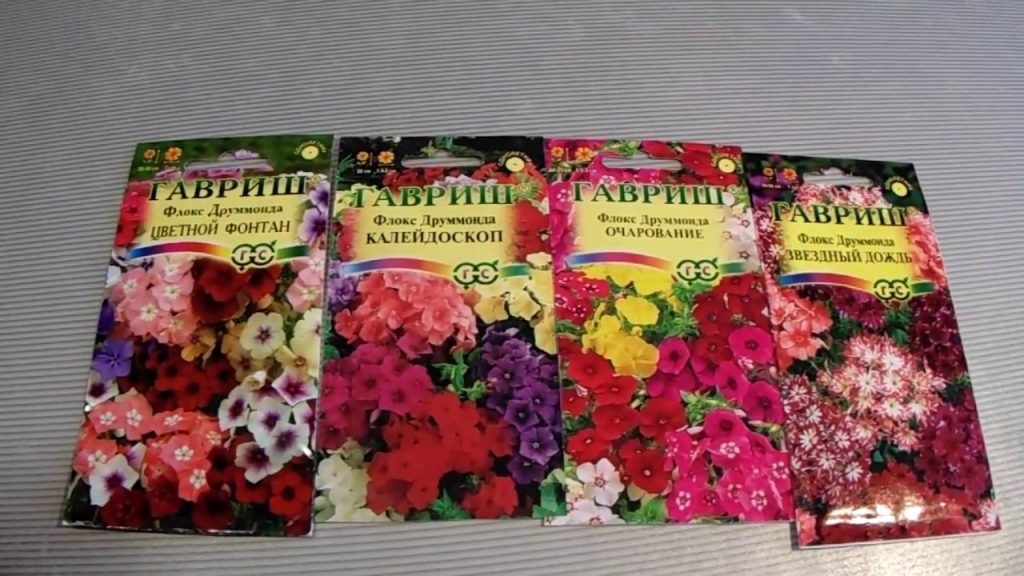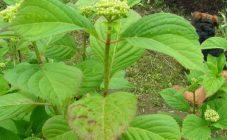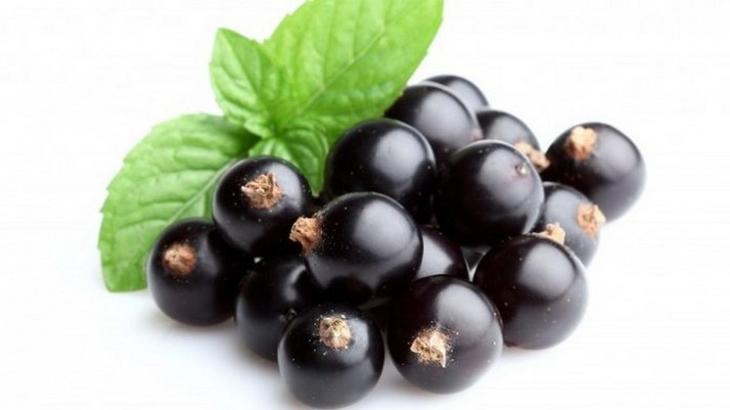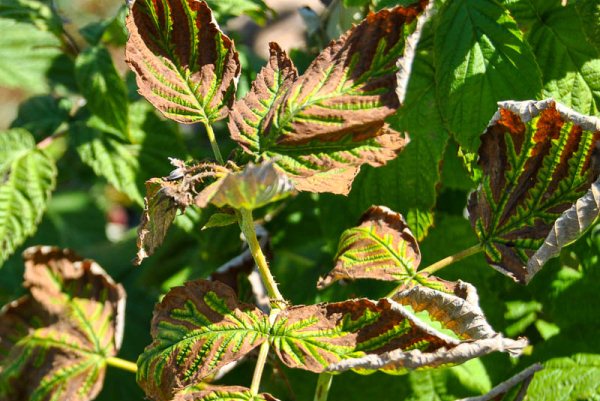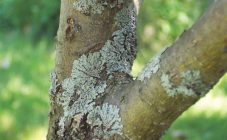Content:
Unpretentious phloxes decorate garden plots and the local area. Thanks to their varietal and species diversity, beautiful flowers can be admired all season. But there are phlox diseases that accelerate the wilting process, which may prevent flowering. Moreover, there are lesions that spread from a diseased plant to neighboring healthy ones and harm the entire flower bed. Knowing the signs of diseases, it is possible to detect a sick flower during a visual examination, and then take timely measures in relation to it.
Common pests
Phlox have pests that feed on roots, the sap of the ground parts of the plant, and the green mass of the bush.
Stem nematode
A dangerous pest betrays itself by thinned tops of shoots, curling leaves. Due to the stem nematode, the flower may not open or a few ugly inflorescences appear on it. A heavily affected plant dries up.
It is impossible to completely expel the pest. The bush is dug up and burned, and the land where it grew is disinfected. It will be possible to plant phlox there in 4 years. Marigolds and nasturtiums are grown in the infected area.
A valuable varietal plant can be preserved by removing twisted damaged stems and allowing the bush to overwinter. In early spring, while it is cold and the pests continue to winter in the roots, you need to break off an outwardly healthy shoot up to 4 cm high.Rinse it under running water and plant it under shelter in an isolated place. Dig up and destroy the infected bush.
Black cruciferous flea
In early spring, fleas leave their winter shelters and begin to feed by scraping off the top layer of leaves. From this they are injured, small ulcers of about 2 mm appear. As the plant grows, they grow larger and become holes. If female flea beetles lay larvae under a phlox bush, then the new generation causes significant damage to the flower, leading to its death.
To get rid of flea beetles, the plant must be treated with insecticides (karate, fury, kinmix) or powdered 2-3 times every 4-5 days with a mixture of tobacco dust and ash, taken in equal proportions. For prevention, weed control should be carried out so that the bottom of the plant does not come into contact with weeds.
Phlox viral diseases and their treatment
The carriers of viral infection are garden pests such as aphids, ticks, cicadas, roundworms. Viral diseases among phloxes are not common, but they cause great damage to flower beds and garden, garden crops. Knowing what phlox is sick with and how to treat infections will help save flowers and avoid a larger infection.
Variegated phlox
Each variety has its own characteristic external feature. The virus affects the color of the petals and the species degenerates.If the infected plant is not isolated or removed from the site, then the virus spreads and harms the entire phlox collection.
When infected with a virus, radial stripes appear on the petals of the inflorescences. Moreover, they are located not symmetrically or evenly, but in sectors. Over time, the entire petal begins to brighten, and the bush fades before our eyes.
A diseased plant becomes a hotbed of infection: the virus is transmitted with pollen and seeds, spread by soil nematodes, and spreads with sap. A diseased plant is sometimes difficult to recognize:
- Due to changes in inflorescences similar to those laid by nature (natural flowering, etc.). To dispel doubts, it is enough to look into several unopened buds. Color changes will be visible in the petals of a plant infected with the virus. If they are not there, then the color, uncharacteristic for the variety, is caused by weather conditions;
- It is difficult to consider variegation in varieties with white flowers. An accurate infection result can be obtained in a professional laboratory.
- New varieties of phlox with unusual color and shape of petals can be misleading. To learn more about the variety, help information gleaned in the literature and from the Internet.
Varieties with a genetically determined variegated color include Darwin's Joyce, Elizabeth, Phlox paniculata Drakon. These varieties are distinguished by discontinuous symmetrical strokes resembling splashes.
If, when a phlox is found to have variegated leaves, there is no doubt, you need to part with the plant: dig it up, burn it along with the rhizome, treat the ground in place of the bush with fungicides.
Ring spot
The first signals of the disease are light spots on the leaves. Over time, they cover the entire green mass of a plant infected with the black ringed virus of tomatoes. The phlox leaf begins to curl, all parts of the plant are deformed, and the bush looks sick.
The carrier of the virus is a soil nematode. You need to part with the plant.
Curliness
Damage to the curl virus leads to leaf modification. Numerous black or yellow-green spots of various shapes appear on them, the veins become brown. The leaves are curled in a spiral. A bush with many weak, short shoots looks dwarf. A diseased plant does not bloom and may die without the help of a grower.
The cause of the disease is infection with the cucumber mosaic virus or vein necrosis virus. To help the plant, you need to spray the bush with the fungicide scor or its analogs, after removing the trace of infection from the bush - black spotted leaves. You also need to remove the debris under the flower.
If the treatments were not effective, and the plant continues to wilt, phloxes are dug up and destroyed.
Phlox diseases due to fungal infection and their treatment
Phlox are considered an unpretentious plant, but they can get sick due to a fungal infection. The main reason for their appearance is violations of agrotechnical norms: dense planting, high humidity, high temperature. The fungus is transferred with drops of water, by air, after direct contact with a diseased plant. Phlox can get sick from an infection spread by insects and carried through garden tools by humans.
Verticillary wilting
Most phlox diseases occur during the budding and flowering period and have pathogens in the roots of the plant. Microscopic fungus Vnticillium albo-atrum - the causative agent of phlox verticillary wilt lives in the ground near the root collar. It clogs up the vessels of the stem, and the plant withers quickly. In case of a disease, the flower has erect, healthy-looking stems, on which twisted and yellowing leaves are firmly held. Over time, the stems can also turn yellow, they lose turgor, become brown and dry out. If you do not fight the infection, the bush can die quickly in a season.
You need to treat:
- introducing biofungicides or fungicides into the soil (trichodermin at the rate of 2 g per 1 bush, glyocladin, 1 tablet per bush);
- when transplanting, treating the roots with fungicide solutions (0.2% maxim or vitaros).
Sick plants are removed with an earthen clod, the soil after them is spilled with a fungicide solution (maxim, gamair).
Powdery mildew
The causative agent of the disease is a microscopic fungus that settles on the leaves. With powdery mildew, it is a mushroom of the Erysiphoid family, with false mildew, a mushroom of the Peronosporov family.
- Powdery mildew is manifested by spots of white bloom, reminiscent of thick cobwebs, on the leaves of phlox. First, white blotches cover the upper surface of the lower leaves, then spread to young ones. Over time, the area covered with white bloom increases, acquiring a dirty tint, on which brown spots of myceliums become visible. As the disease progresses, the leaves begin to dry out, fungus and mold spread to the inflorescences and stems, and the plant dies.
- With downy mildew, the upper surface of the leaves is covered with yellow spots. Leaf plates from the disease droop, wrinkle, dry. Small fragments with myceliums are separated from the dried leaves and fall off.
What to do if phlox leaves turn yellow from powdery mildew and how to treat white bloom:
- cut and burn the affected parts of the bush;
- treat the plant with a copper-containing preparation (for example, topaz, skor, hom, ridomil gold, Bordeaux liquid).
From infection of phlox with powdery mildew, preventive spraying with copper-containing compounds helps, starting from the beginning of summer and at intervals of 2 weeks.
Fomoz
When yellowish-brown spots appear on the lower leaves of phlox and yellowing of the lower leaves is observed, it is highly likely that this is due to phomosis, a disease caused by the Thomas fungus. When the plant is affected, the base of the shoots of the plant turns brown, the leaves curl up and dry out a week after the infection of the bush. The leaf plate from the lower side begins to turn black, covered with black dots of the mycelium. The stem loses its elasticity and cracks, the plant lies on the ground or breaks. The disease is mainly susceptible to long-term (2-3-year) phlox.
It is difficult to treat phomosis, so it makes sense to help only rare varieties of phlox recover. For this:
- the tops of healthy shoots of the bush are cut off;
- keep them in a fungicide solution (foundationol, maxim);
- cuttings are planted in the ground. To prevent the spread of infection, the landing site is selected remote and isolated.
To contain the spread of infection and prevent the plant from drying out, phloxes are sprayed with a copper-containing preparation at intervals of 10 days (for example, home, abiga-peak, 1% solution of Bordeaux liquid).
Rust, or uredineae
Phlox of many varieties are sick with rust (it has been noticed that white phlox are less susceptible to disease). The cause of the disease is the fungus Uredineae. When infected, rusty brown spots appear on the leaves. With the development of the disease, their size increases, the leaves begin to wither and dry. The plant loses strength and, if not helped, may die.
Rust is treated, like powdery mildew, by spraying with copper-containing preparations. They are sprayed onto the plant itself and the soil around the bush.
Leaf spot, or septoria
The appearance of phlox on the leaves during the budding period of gray spots can be considered the first sign of septoria. Disease spots increase, turn yellow and begin to blush along the contour. Then the yellowed leaf withers, dries and dies off. If the plant is not started on time, the flower dies.
Like rust fungus, Septoria phlogis Sac can be treated with copper-containing agents.
Other causes of yellow leaves
The answer to the question of why the lower leaves of phlox turn yellow, what to do, does not always lie in the plane of diseases and infections. A yellow leaf is a bad sign (this is the norm only for the autumn period). It signals that there are problems in the development of the plant, from which growth slows down, the flowering period decreases.
The condition of the plant largely depends on the conditions of growth and care. And the reason why the lower leaves of phlox dry out may be flaws in maintaining agrotechnical standards. So, an open area is good for phloxes, but such that in the middle of the day, when the sun is at its zenith, the bush is shaded. The plant loves and blooms in large quantities with beautiful inflorescences on fertilized, loose and moderately moist soil. In the absence of at least one of these conditions, the flower withers, it can turn yellow and dry, and then the lower leaves die off.
To exclude the disease from the reasons why phloxes dry from below, you need to carefully examine the plant. If other symptoms are found, the plant must be saved with treatment.
Tips from experienced florists
Three important advice-parting words to people growing phlox, explaining why:
- The onset of diseases of perennial phlox is imperceptible due to a latent course. The fact that a healthy-looking plant is infected with a dangerous infection will become clear, but much later. In order not to harm the phlox collection, it is advisable to plant the purchased flower for 2 years in the quarantine site of the site.
- It is necessary to carefully examine the plantings at least once every 2 weeks. If alarming symptoms are found (asymmetry of the petals, strange discoloration of flowers, curvature of the corolla, spots on the leaves, various deformations of the bush), a suspicious plant should be immediately treated or dug up and burned.
- Disease-causing viruses are also transmitted through gardening tools and used containers. All gardening equipment must be disinfected.
Having identified the disease and diagnosed, the gardener must take timely measures. If the infection is of viral origin, you need to part with the plant without regret, and by burning a bush with a rhizome. And the ground under the bush should be disinfected. Phloxes with fungal diseases can be saved by providing the plant with proper care. Perhaps the flower is not at all sick, and cracking of the stems and yellowness of the lower leaves caused excessive watering.
